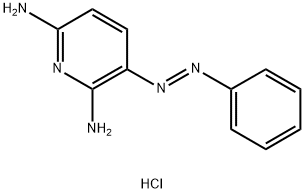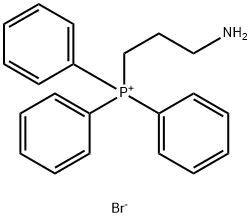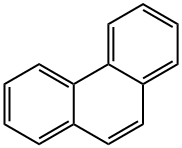PhenazopyridineHCl , 10mMinDMSO , 136-40-3
Synonym(s):
2,6-Diamino-3-(phenylazo)pyridine hydrochloride;Phenazopyridine hydrochloride;Urodine
CAS NO.:136-40-3
Empirical Formula: C11H12ClN5
Molecular Weight: 249.7
MDL number: MFCD00035347
EINECS: 205-243-8
| Pack Size | Price | Stock | Quantity |
| 1ml | RMB239.20 | In Stock |
|
| others | Enquire |
PRODUCT Properties
| Melting point: | 139°C |
| Boiling point: | 394.6°C (rough estimate) |
| Density | 1.2645 (rough estimate) |
| refractive index | 1.6110 (estimate) |
| storage temp. | Sealed in dry,2-8°C |
| solubility | DMSO (Slightly, Heated), Methanol (Slightly, Heated) |
| form | Liquid |
| color | Clear to hazy colorless to yellow |
| Water Solubility | 0.01-0.1 g/100 mL at 20 ºC |
| Merck | 14,7210 |
| Stability: | Light Sensitive |
| InChIKey | QQBPIHBUCMDKFG-GEEYTBSJSA-N |
| CAS DataBase Reference | 136-40-3(CAS DataBase Reference) |
| IARC | 2B (Vol. 24, Sup 7) 1987 |
| EPA Substance Registry System | Phenazopyridine hydrochloride (136-40-3) |
Description and Uses
Phenazopyridine is an azo dye with analgesic properties. It decreases the bladder distension-induced firing rate of afferent bladder Aγ-fibers, but not C-fibers, in anesthetized rats when administered at a doses of 0.3, 1, and 3 mg/kg. Formulations containing phenazopyridine have been used as analgesics in the treatment of urinary tract infections.
Phenazopyridine hydrochloride has been used for 50 years as an analgesic drug either alone or in combination with other drugs to reduce pain associated with urinary tract infection. An azo dye used in urinary tract infections. Also used as a local anesthetic. Exposure to phenazopyridine hydrochloride occurs during manufacture and formulation.
Safety
| Symbol(GHS) |   GHS07,GHS08 |
| Signal word | Warning |
| Hazard statements | H302-H315-H319-H335-H351 |
| Precautionary statements | P202-P261-P301+P312-P302+P352-P305+P351+P338-P308+P313 |
| Hazard Codes | Xn,C |
| Risk Statements | 22-36/37/38-40-34-42/43 |
| Safety Statements | 26-36/37-45-36/37/39-27-22 |
| RIDADR | 2811 |
| WGK Germany | 3 |
| RTECS | US7875000 |
| HS Code | 29333990 |
| Toxicity | LD50 orally in rats: 403 mg/kg (Becker, Swift) |





